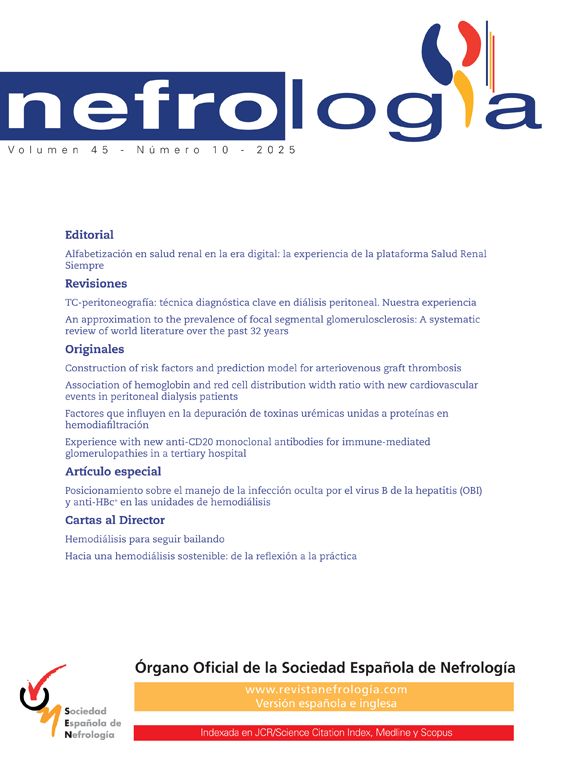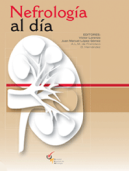To the Editor,
We have read with much interest the article by M. Luisa Gonzaléz-Casaus et al.1 on the difficulty of performing an inter-method adjustment of parathyroid hormone (PTH) measurement in peritoneal dialysis patients due to significant differences in the quantity of biologically active PTH present in patients who receive peritoneal dialysis compared with those who receive haemodialysis. There is increasing criticism of using intact PTH as a biomarker for the monitoring and follow-up of bone turnover in patients on dialysis and a need to find new and more efficient markers2.
The observation of the authors regarding serum BCTx (beta crosslaps) is very interesting. Table 5 of this article clearly demonstrates how, while no intact PTH assay shows significant differences between haemodialysis and peritoneal dialysis patients, these bone turnover markers do show very significant differences.
Serum BCTx are fragments that form as a result of the degradation of type I collagen that are released during osteoclastic bone resorption. BCTx are used assiduously in the monitoring of the therapeutic effectiveness of treatment with bisphosphonates and other antiresorptive drugs in the treatment of postmenopausal osteoporosis and they are capable of predicting hip fracture independently of bone densitometry3. These markers have a low intra-assay coefficient of variation when they are measured by ElecysR in automatic analysers. In addition, they have a good correlation with other bone markers in patients on haemodialysis and those on peritoneal dialysis4.
In conclusion, we believe that serum BCTx are promising markers in the evaluation of bone turnover in dialysis patients and should be included in prospective longitudinal studies to analyse their capacity in predicting bone turnover assessed by bone histomorphometry.
Conflicts of interest
The author declares that he has no conflicts of interest related to the contents of this article.






